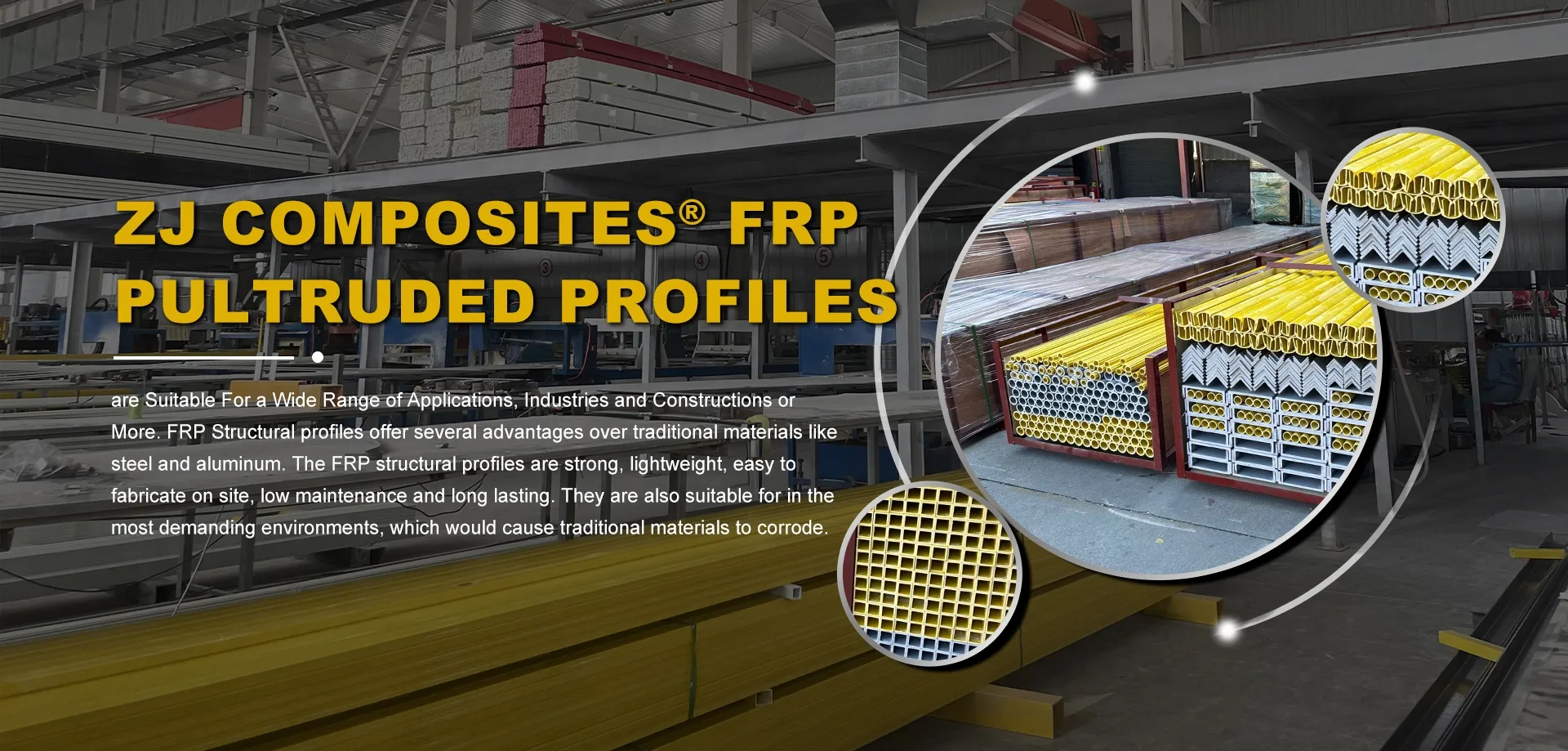loading...
- No. 9, Xingyuan South Street, Dongwaihuan Road, Zaoqiang County, Hengshui, Hebei, China
- admin@zjcomposites.com
- +86 15097380338
- Welcome to visit our website!
Innovative Applications of FRP Pultruded Profiles in Modern Construction and Design
Understanding FRP Pultruded Profiles Advantages and Applications
Fiber Reinforced Polymer (FRP) pultruded profiles are increasingly gaining popularity in various industries due to their exceptional properties and versatility. This innovative material offers a unique combination of strength, lightweight characteristics, corrosion resistance, and ease of fabrication. In this article, we will explore the fundamental aspects of FRP pultruded profiles, their advantages, and the myriad applications they serve.
What are FRP Pultruded Profiles?
FRP is a composite material made by reinforcing polymer with fibers, commonly glass, carbon, or aramid. The pultrusion process involves pulling the combined fibers through a resin bath and then through a heated die where the material is cured and shaped into continuous profiles. This method allows for the production of complex shapes with consistent cross-sections and excellent mechanical properties.
Advantages of FRP Pultruded Profiles
1. Lightweight One of the most notable advantages of FRP pultruded profiles is their low weight compared to traditional materials such as steel or aluminum. This attribute not only allows for easier handling and installation but also reduces structural loads and transportation costs.
2. Corrosion Resistance FRP materials are inherently resistant to a wide range of chemicals, moisture, and environmental factors. This makes FRP pultruded profiles ideal for use in harsh environments, such as marine applications, chemical processing plants, and wastewater facilities. Their ability to withstand corrosion leads to longer service life and reduced maintenance costs.
3. High Strength-to-Weight Ratio Despite their lightweight nature, FRP profiles possess excellent mechanical properties, including high tensile strength and rigidity. This strength allows them to support heavy loads while maintaining structural integrity, making them suitable for demanding applications.
4. Thermal and Electrical Insulation FRP materials offer good thermal insulation and are non-conductive, making them ideal for applications requiring electrical insulation or environments where temperature stability is crucial.
5. Customizability The pultrusion process allows for precise control over the material's properties, including fiber orientation, resin type, and additives. This flexibility enables the production of customized profiles to meet specific design requirements and functional needs.
frp pultruded profiles

Applications of FRP Pultruded Profiles
FRP pultruded profiles are used across a broad spectrum of industries, demonstrating their versatility
- Construction In building and construction, FRP profiles are utilized for structural components, such as beams, columns, and trusses. Their lightweight and corrosion-resistant nature makes them an excellent choice for bridges and elevated walkways.
- Transportation The aerospace and automotive industries use FRP profiles for lightweight components that improve fuel efficiency without compromising strength and safety.
- Infrastructure FRP materials are increasingly used in infrastructure projects, including railings, gratings, and bridge decking, due to their longevity and resistance to the elements.
- Renewable Energy In the renewable energy sector, FRP pultruded profiles are used in the manufacture of wind turbine blades and solar panel supports, where strength and low weight are vital for efficiency.
- Industrial Applications FRP profiles find extensive use in industrial settings for ladder rungs, scaffolding, and chemical storage tanks due to their durability and resistance to corrosive substances.
Conclusion
FRP pultruded profiles represent a significant advancement in material science, providing an array of benefits that are transforming various industries. Their lightweight nature, high strength, and resistance to corrosion make them an ideal choice for a wide range of applications, from construction and transportation to infrastructure and renewable energy. As technology continues to improve and the demand for sustainable materials rises, the role of FRP in modern engineering and construction will undoubtedly expand, paving the way for innovative solutions in the years to come.
-
Premium FRP Handrail for All ApplicationsNewsAug.29,2025
-
Low Maintenance FRP Mini Mesh Grating ProductsNewsAug.29,2025
-
Innovative FRP Square Tubes for Modern Industrial SolutionsNewsAug.29,2025
-
FRP Water Storage Tanks Wholesale Solutions for Bulk BuyersNewsAug.29,2025
-
FRP Molded Grating Solutions for Diverse Industrial ApplicationsNewsAug.29,2025
-
Construction Advancements Through FRP Pultruded ProfilesNewsAug.29,2025
-
Why Choose FRP Railings, Guardrails, and Handrail Systems?NewsAug.29,2025
